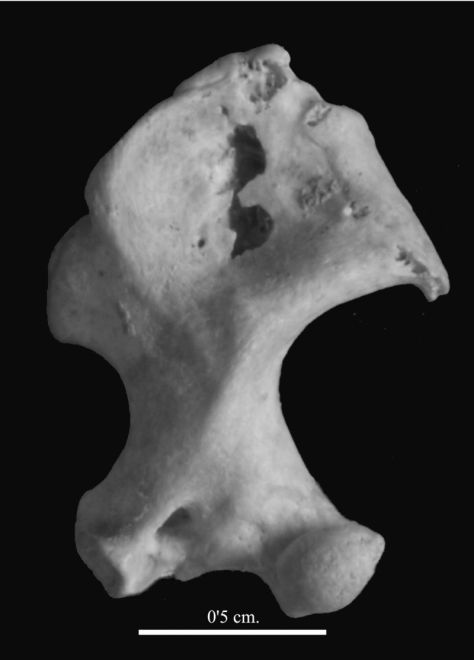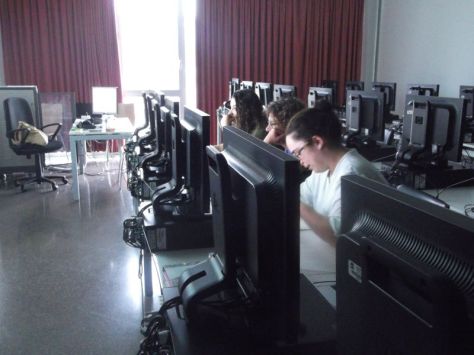These animals, as hominids, consumed rabbit and hare within the cavity
This reveals that Homo neanderthalensis was able to exploit a wide spectrum of fauna
This is revealed in an article recently published in the journal Comptes Rendus Palevol by Anna Rufa, IPHES archaeologist, as principal author
PHOTOS – CATALÀ – ESPAÑOL
Up to now, previous investigations established that Teixoneres Cave, located in Moià (Barcelona), was occupied during the Middle Palaeolithic by Neanderthals and large carnivores. Two new studies that have just been published, and which origin are on two master theses from the Erasmus Mundus Master in Quaternary Archaeology and Human Evolution presented in 2013 at the Rovira i Virgili University of Tarragona, provide more information about the occupational dynamics in the cave and expands the faunal range that used the cave.
An article that has just been published in the scientific journal Comptes Rendus Palevol with Anna Rufà, predoctoral fellow in the IPHES (Institut Català de Paleoecologia Humana i Evolució Social), as principal author, states that nocturnal raptors and small mammalian carnivores -such as foxes- shared space with Neanderthals in the Teixoneres Cave during the Middle Palaeolithic, between 40,000 and 50,000 years ago, approximately. These animals, as hominids, consumed rabbits and hares (leporids) within the cavity. “This reveals that Homo neanderthalensis was able to exploit a wide range of fauna”, says Anna Rufà.
Marks on the bones
“The zooarchaeological and taphonomic study of these leporids has identified the presence of nocturnal birds of prey, and small mammalian carnivores – such as fox- as accumulators agents of leporids in Teixoneres”, says the same researcher. “We’ve noted this because predators left consumption traces on bones, such as tooth marks (depressions and grooves) or slight digestive corrosions. In addition, although with lower degree, human groups intervene on leporids remains, and it’s possible to identify cut marks, burned bones and intentional fractures on some remains.
“This behavior allows -says Anna Rufà- to find that Neanderthals were able to exploit a wide range of fauna (from large ungulates to rabbits). In the case of leporids, sex and age profiles of individuals suggest hunting by encounter rates, which could be associated with short-term human occupations”.
Microwear dental studies
Moreover, in a new article published in the Journal of Archaeological Science, leaded by Carlos Sanchez-Hernandez, an ex-student of the Master in Quaternary Archaeology and Human Evolution at the URV, reaffirms that the occupation of Teixoneres Cave by Neanderthals were short, and located near to the entrance.
This conclusion has been suggested by analyzing the patterns of dental microwear and dental eruption of the most abundant large herbivores (ungulates) in the archaeological record of Teixoneres: deer and horse.
Dental microwear studies analyze the microscopic marks related to feeding, which are replaced by new ones in a relatively short period of time, gradually erasing the previous marks. This phenomenon is used as an indicator of the diet of the last days of an animal life. The study of microwear pattern variability allows makes easier to propose an estimation of the occupation dynamics in a site.
The study of the sequence of eruption and tooth replacement also allows to define the period of occupation of the site. In Teixoneres Cave some differences have been identified between levels. In one of the levels (IIIa) occupations are usually short, but developed thorough the year. In contrast, there is a level below (IIIb) whose occupations are mainly in summer, and occasionally, in winter.
References
Rufà, A.; Blasco, R.; Rivals, F.; Rosell, J.; 2014. “Leporids as a potential resource for predators (hominins, mammalian carnivores, raptors): An example of mixed contribution from level III of Teixoneres Cave (MIS 3; Barcelona, Spain)”. Comptes Rendus Palevol 13 (8), 665-680.
Sánchez-Hernández, C.; Rivals, F.; Blasco, R., Rosell, J.; (2014). “Short, but repeated Neanderthal visits to Teixoneres Cave (MIS 3, Barcelona, Spain): a combined analysis of tooth microwear pattern sand seasonality”, Journal of Archaeological Science 49, 317-325.



